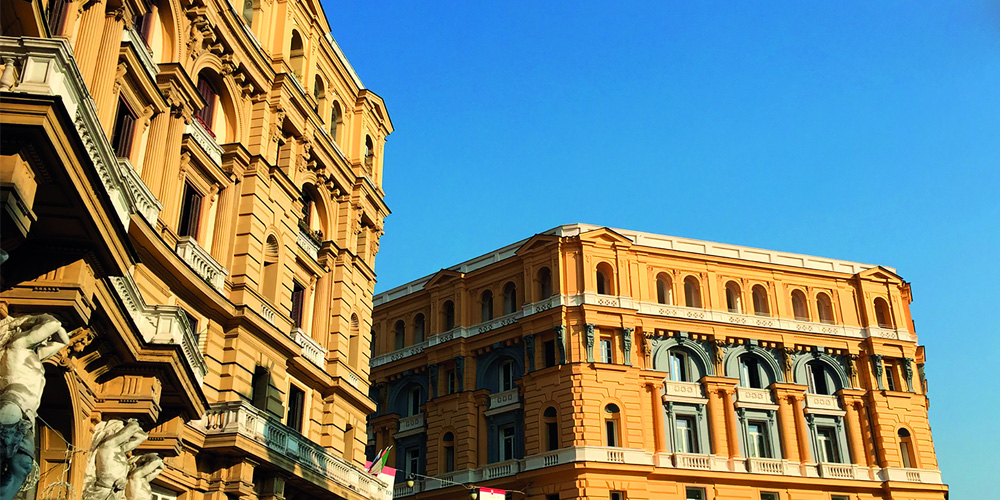The center of Naples: the evolution of Piazza Nicola Amore
After centuries Nicola Amore square will lose its circular shape for the splendid Duomo station and its glazed dome. The Duomo station will be a walk between day and night, between the lights and the shadows, a perennial balance between the modern and the ancient. Through the glazed dome visitors can discover the beauties of the Neapolitan subsoil while remaining in constant contact with the surface. A masterpiece of modern architecture for one of the most beautiful cities in the world.
Naples center during the years: the history of the 'Quattro palazzi'

Piazza Nicola Amore is located in the center of Umberto I street, next to Garibaldi Central Station and near the Cathedral of Naples. Known mostly as "e quatto palazze" by the Neapolitan people, it was built in the 80s of the Ninenteeth century during the rehabilitation of the city and today it appears as a circular square, surrounded by four neo-Renaissance style buildings.
In the coming months the square will become an important hub of the city of Naples with the opening of the Duomo station which will include not only a new urban structure, but above all the opportunity to discover a piece of fundamental history of Naples.
The square has a long history that transcends that of the city of Naples. Located immediately outside the walls of ancient Neapolis, the square was, already in the Greek-Roman era, an active point of everyday life in the city. Merchant ships arrived here and activities of public life took place, as evidenced by the archaeological finds discovered in recent years. In addition to furnishings of any kind, at the end of the nineteenth century, evidence of the life of the Greek polis was found: from a spa complex to statues and busts depicting Hellenic divinities or warriors from the Roman era, to buildings of the imperial age such as: a monumental complex that included a temple on a podium, dedicated to the imperial cult, and bounded by a portico, the gymnasium, through which we witnessed the athletic contests of the games played by Octavian Augustus in the first century AD
Once again, the excavations have discovered a cross-section of the history of Naples, such as the one that was the Olympic citadel of the graeca urbs.
Over the centuries this place has always the function of a public place, in the seventeenth century the square was named "Piazza della Sellaria", because here it was located the fountain of Sellaria, desired by the Spanish viceroys after having sedated the revolts of Masaniello, as a sign return to power in the places of revolts.
The square assumes the current circular shape after the work of the rehabilitation of the late nineteenth century. Surrounded by four neo-Renaissance buildings with entrances supported by four telamons that give an air of monumentality to the complex, the statue of the mayor to whom it is dedicated, Nicola Amore, was in this place and moved in 1938 on the occasion of Hitler's visit in Naples to ensure that there were no obstacles to the path of the German fuhrer to the sea of Naples, and never relocated.
But the square is going to live a new life thanks to the new project of the Duomo station by the Italian architect Massimiliano Fuksas.
It's like a walk along the hours of the day: the colors change, from light blue to orange sunset and beyond, to night. It is almost the walk of an astronaut who sees the earth from the moon and observes the phases of the day that follow each otherMassimiliano Fuksas










Lascia un commento